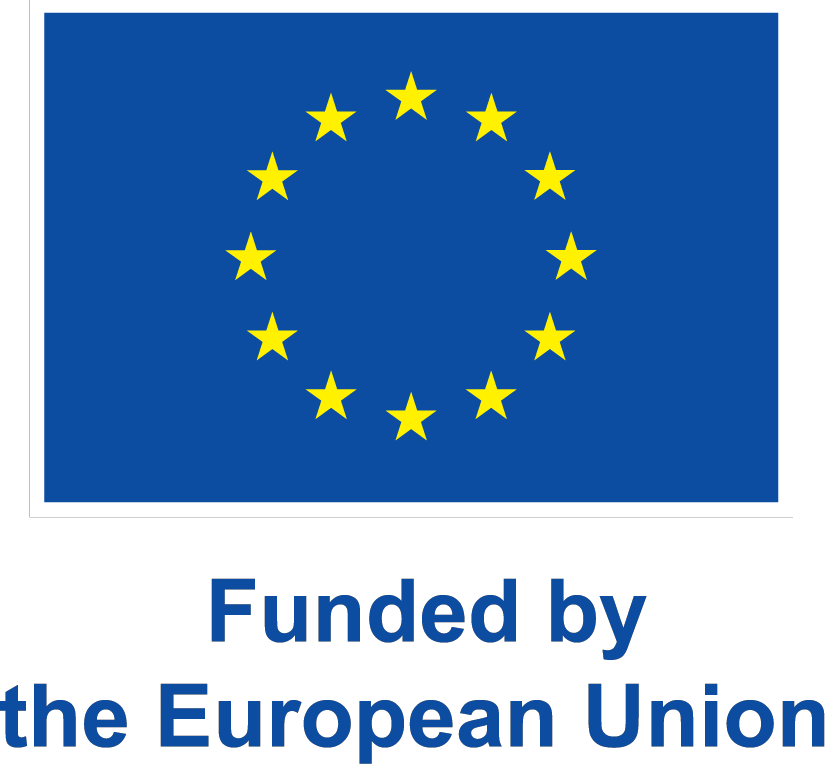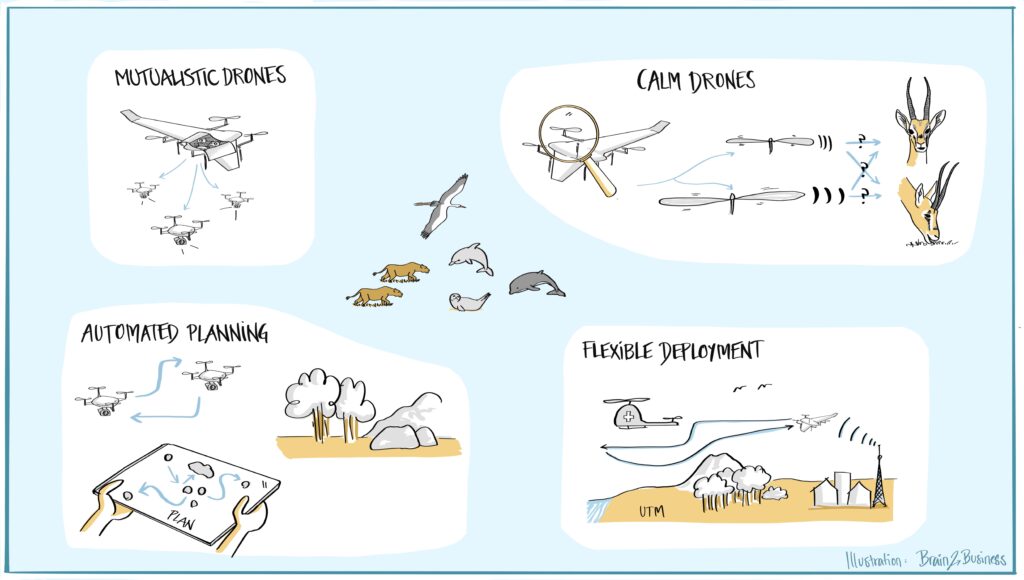Theme 2
Safe and Flexible Drone Operations
The doctoral projects under Theme 2 have two main objectives.
Development of technologies for adaptive and flexible use of drones to observe animals in complex environments
Autonomous drones are a promising technology with great potential for adaptive and flexible monitoring of animals in their natural environment. However, current systems do not offer the combination of long endurance Beyond Visual Line Of Sight (BVLOS) operations; Vertical Take-Off and Landing; and the ability to capture close-up images of individual animals from multiple, multi-angle view-points. Working with a leading SME in the field of quad planes, VTOL will be combined with onboard navigation and re-routing enabling operations in remote locations with complex terrains. Control systems will be developed for the deployment and re-capture in flight of smaller parasitic drones, enabling close-up data capture of individual animals at high resolutions (DC13 – Mutualistic Drones). In addition to BVLOS flight, operations with multiple drones are key to widening the geographical and temporal coverage of drone missions. However, the complexity and variability of nature conservation missions required for nature conservation implies a need for dedicated planning and control algorithms to be developed for each specific scenario, which is tedious and time consuming (DC6 – Automated Planning).
Development of techniques for the safe and unobtrusive use of drones to observe animals undetected
With the significant benefits that BVLOS operations offer, the local re-routing for terrain avoidance needs to be combined with mission-level planning and control algorithms which are scenario specific (addressed in Theme 3). These are also the key to widening the geographical and temporal coverage of drone missions. EU expects that widespread use of BVLOS operations in non-controlled airspace, such as required for the kind of nature conservation effort envisioned by WildDrone, will be based on the use of UTM (UAS traffic management) to safely guide the drone in non-controlled airspace[1]. To work using UTM, on-board guidance systems will be integrated with UTM systems suitable for adaptive and flexible WildDrone BVLOS nature conservation missions both in Europe and Africa (DC7 – Flexible Deployment). Moreover, one of the key requirements for the mission system will be the need for low-impact operations, with the physical aircraft design enabling the creation of drones that are unobtrusive towards the animals being observed when deployed for the purposes of conservation (DC5 – Calm Drones).
Get in touch
Contact us on WildDrone@sdu.dk



WildDrone is an MSCA Doctoral Network funded by the European Union’s Horizon Europe research and innovation funding programme under the Marie Skłodowska-Curie grant agreement no. 101071224. Views and opinions expressed are those of the author(s) only and do not necessarily reflect those of the European Union or the European Commission. Neither the EU nor the EC can be held responsible for them.

